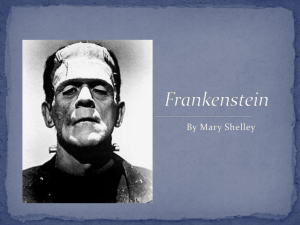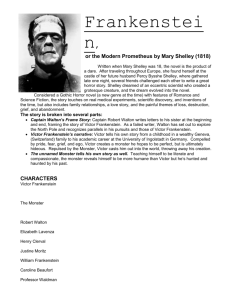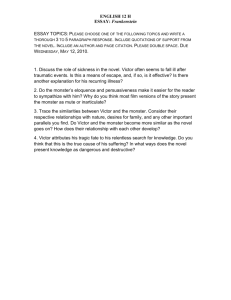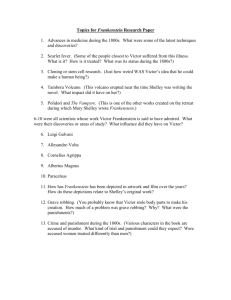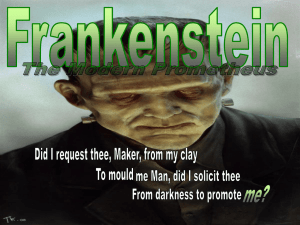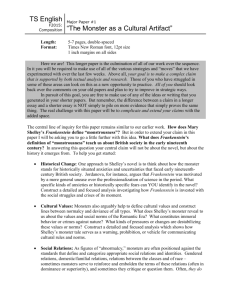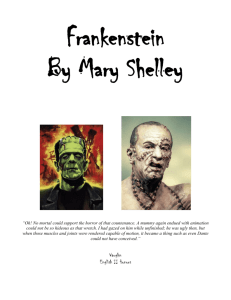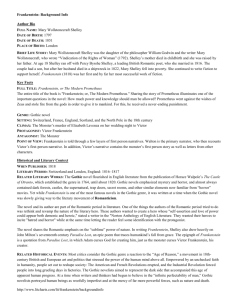Theme Analysis of Frankenstein –What do you think
advertisement
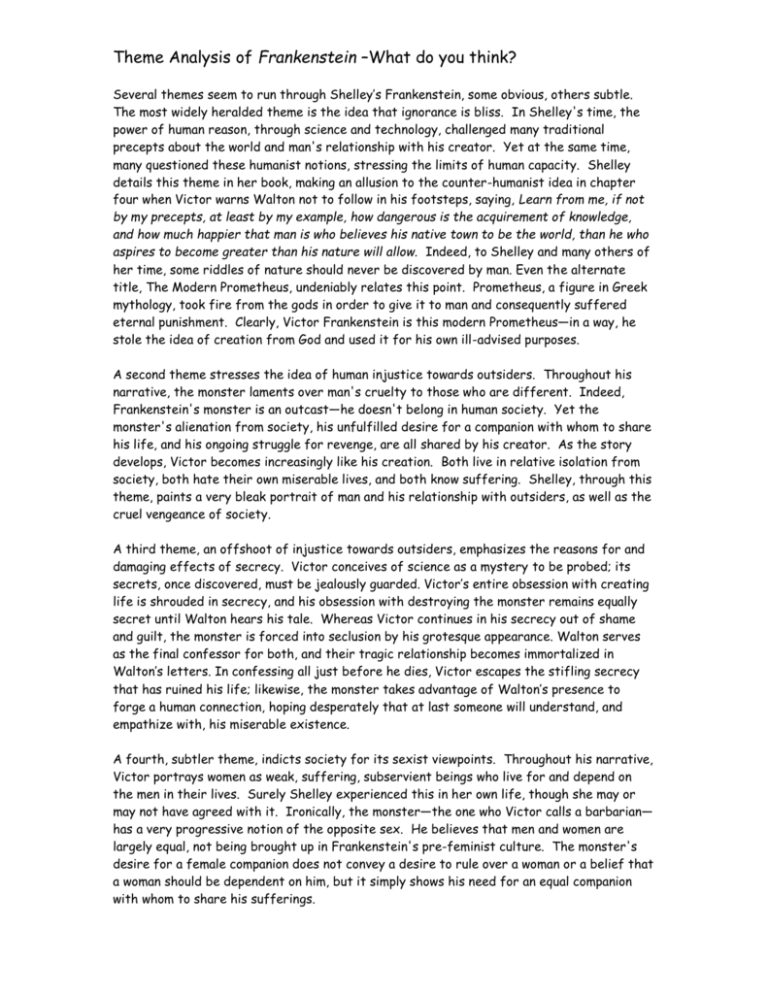
Theme Analysis of Frankenstein –What do you think? Several themes seem to run through Shelley’s Frankenstein, some obvious, others subtle. The most widely heralded theme is the idea that ignorance is bliss. In Shelley's time, the power of human reason, through science and technology, challenged many traditional precepts about the world and man's relationship with his creator. Yet at the same time, many questioned these humanist notions, stressing the limits of human capacity. Shelley details this theme in her book, making an allusion to the counter-humanist idea in chapter four when Victor warns Walton not to follow in his footsteps, saying, Learn from me, if not by my precepts, at least by my example, how dangerous is the acquirement of knowledge, and how much happier that man is who believes his native town to be the world, than he who aspires to become greater than his nature will allow. Indeed, to Shelley and many others of her time, some riddles of nature should never be discovered by man. Even the alternate title, The Modern Prometheus, undeniably relates this point. Prometheus, a figure in Greek mythology, took fire from the gods in order to give it to man and consequently suffered eternal punishment. Clearly, Victor Frankenstein is this modern Prometheus—in a way, he stole the idea of creation from God and used it for his own ill-advised purposes. A second theme stresses the idea of human injustice towards outsiders. Throughout his narrative, the monster laments over man's cruelty to those who are different. Indeed, Frankenstein's monster is an outcast—he doesn't belong in human society. Yet the monster's alienation from society, his unfulfilled desire for a companion with whom to share his life, and his ongoing struggle for revenge, are all shared by his creator. As the story develops, Victor becomes increasingly like his creation. Both live in relative isolation from society, both hate their own miserable lives, and both know suffering. Shelley, through this theme, paints a very bleak portrait of man and his relationship with outsiders, as well as the cruel vengeance of society. A third theme, an offshoot of injustice towards outsiders, emphasizes the reasons for and damaging effects of secrecy. Victor conceives of science as a mystery to be probed; its secrets, once discovered, must be jealously guarded. Victor’s entire obsession with creating life is shrouded in secrecy, and his obsession with destroying the monster remains equally secret until Walton hears his tale. Whereas Victor continues in his secrecy out of shame and guilt, the monster is forced into seclusion by his grotesque appearance. Walton serves as the final confessor for both, and their tragic relationship becomes immortalized in Walton’s letters. In confessing all just before he dies, Victor escapes the stifling secrecy that has ruined his life; likewise, the monster takes advantage of Walton’s presence to forge a human connection, hoping desperately that at last someone will understand, and empathize with, his miserable existence. A fourth, subtler theme, indicts society for its sexist viewpoints. Throughout his narrative, Victor portrays women as weak, suffering, subservient beings who live for and depend on the men in their lives. Surely Shelley experienced this in her own life, though she may or may not have agreed with it. Ironically, the monster—the one who Victor calls a barbarian— has a very progressive notion of the opposite sex. He believes that men and women are largely equal, not being brought up in Frankenstein's pre-feminist culture. The monster's desire for a female companion does not convey a desire to rule over a woman or a belief that a woman should be dependent on him, but it simply shows his need for an equal companion with whom to share his sufferings. Your Job—Take one of these themes and develop it into a paper and presentation. The paper does not have to be long—1 to 2 pages. In clear, organized, paragraphs (more than one) prove one of the above themes using examples from the book. That means direct quotes with citations. Here is an example: “’Slave, I before reasoned with you, but you have proved yourself unworthy of my condescension. Remember that I have power;’”(172). Notice the double quotation marks around the sentences because they are quoted in the book. 1) Your paper must have a clear introduction with a thesis statement (that which you are trying to prove), body paragraphs, and a conclusion. The number of paragraphs are up to you as long as each paragraph is organized and contains only one subtopic. Each body paragraph must contain at least ONE citation from the book to prove your thesis. If the quote does not support your thesis, it is not a useful quote! 2)Double space your paper. Use Times New Roman 12. However, if you have a quote that is longer than three lines, you MUST use long quote format. See me for directions if this happens to you! 3)Turn your paper into a 2-3 minute Power Point. This does NOT mean to just copy and paste your paper onto the Power Point slides. A Power Point is meant to be visual, so take that into consideration. You will basically explain to us (with visual aides) the theme you proved in your paper and how you did it. Focus and Organization (15 Points) *Clear introduction with thesis statement *Each body paragraph has it’s own subtopic *Clear ending that recaps your thesis idea Support (15 Points) *Use of quotes that clearly support what you are trying to prove and aren’t thrown in randomly *Correct quote/citation format *At least one quote per body paragraph Grammar/Conventions (15 Points) *spelling *punctuation *sentence structure *word usage *word omissions *verb tense (Use the historical present when talking about literature) *agreement *OTHER Power Point (15 Points) *2-3 Minutes in length *more visual than textual *Gives a clear overview of your paper *use of correct grammar and citations *HARD COPY PRINTOUT of slides turned in the day presentations begin

